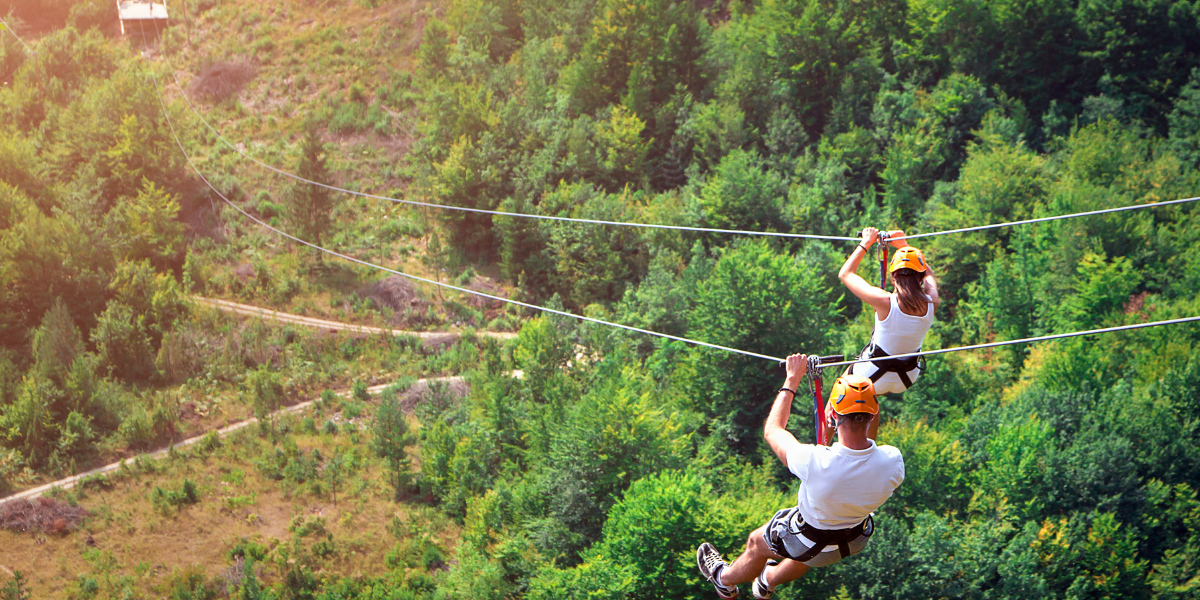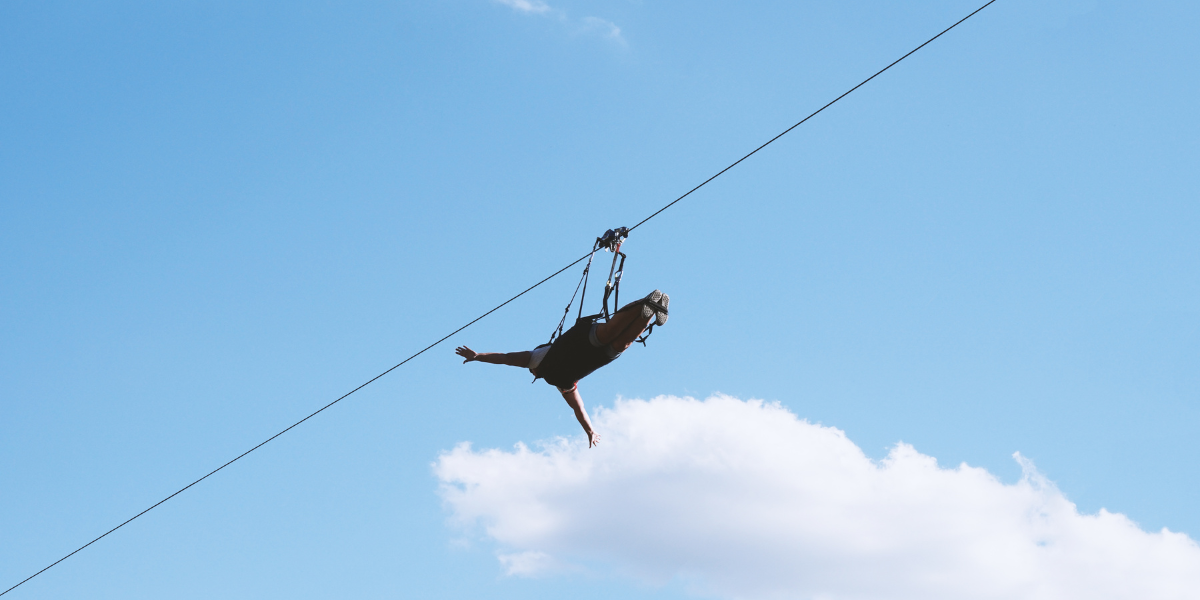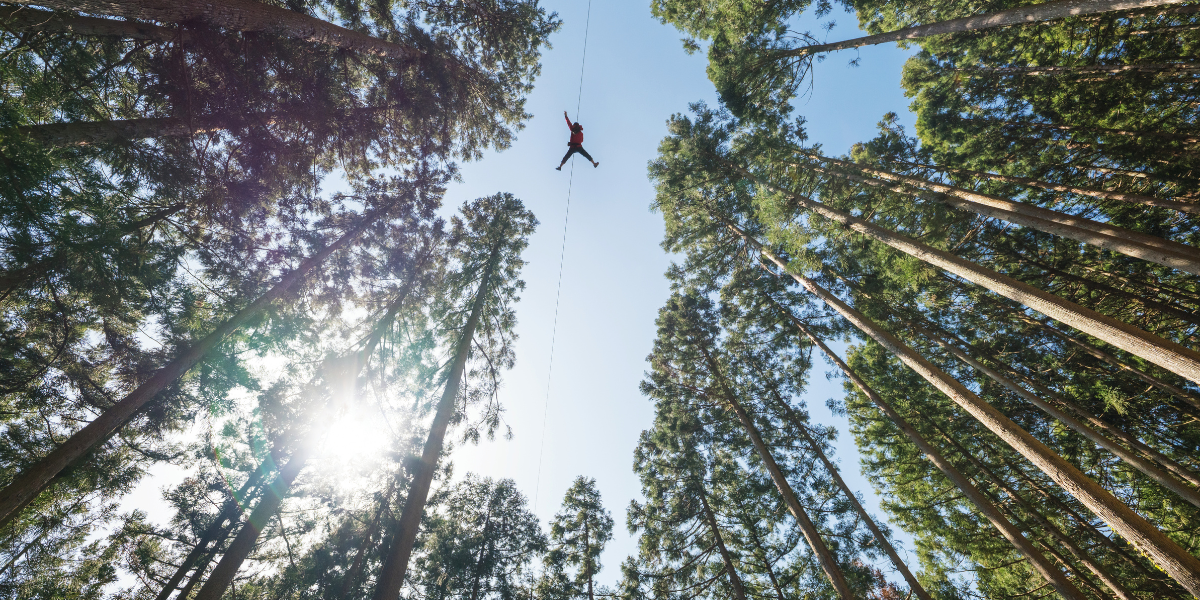Ziplining is an exhilarating and popular outdoor adventure that has gained immense popularity in recent years. It is an exciting activity that lets you soar through the air while enjoying the stunning views of nature. Professional zipline design and engineering play a crucial role in providing a safe, exciting, and unforgettable experience.
If you are planning to offer zipline services or looking to experience the thrill yourself, it's crucial to choose a professional zipline provider that prioritizes safety, quality, and experience. This article will guide you through the key elements of professional zipline design and engineering to ensure a safe and unforgettable adventure.
The Importance of Professional Zipline Design and Engineering
Ziplining can be an exciting and unforgettable experience, but it also involves potential risks and hazards. Therefore, it is crucial to prioritize safety and security in the design and engineering of a zipline course. Professional design and engineering not only ensure the safety of the zipline course but also provide an exciting and unforgettable experience for the riders. It also helps to meet industry standards and regulations, such as ERCA, ASTM International, ACCT, and PRCA. By choosing a provider with professional zipline design and engineering, you can have peace of mind that you are experiencing a well-engineered and safe adventure.
What are the Key Elements of Professional Zipline Design and Engineering
Zipline design and engineering are essential to provide a safe, exciting, and unforgettable experience. Designing the course appropriately is a crucial element, including determining the length and height of the course, choosing the right terrain, designing for different skill levels, and incorporating natural elements. Safety features of a professional zipline course include using quality materials and equipment, implementing proper anchoring and support systems, installing effective braking and deceleration systems, and providing adequate staff and guide training. Maintenance procedures for a professional zipline course involve conducting regular inspections and assessments, addressing repairs and maintenance needs promptly, and updating equipment and systems as needed. By implementing these key elements, you can ensure that the zipline course is safe, enjoyable, and meets all industry standards and regulations.

Professional zipline design and engineering requires careful consideration and planning to ensure the safety, quality, and experience of the zipline course. Choosing the right zipline provider is the first step, and it involves researching the provider's reputation and experience, checking their safety measures and certifications, and reviewing their insurance and liability coverage.
Designing the course appropriately is another critical element, including determining the length and height of the zipline course, choosing the right terrain and setting, designing for different skill levels and abilities, and incorporating natural elements and scenic views. Safety features of a professional zipline course are also crucial, such as using quality materials and equipment, implementing proper anchoring and support systems, installing effective braking and deceleration systems, and providing adequate staff and guide training.
Maintenance procedures for a professional zipline course involve conducting regular inspections and assessments to ensure all safety features are functioning correctly. Addressing repairs and maintenance needs promptly and updating equipment and systems as needed is crucial to keep the course safe and enjoyable for all. By incorporating these key elements, you can ensure that the zipline course meets all industry standards and regulations and provides an unforgettable, safe, and enjoyable adventure for all.
It is crucial to understand that every element of professional zipline design and engineering is interconnected and critical to providing a safe and unforgettable experience. The provider's reputation, safety measures, and certifications set the foundation for the zipline course, ensuring that the course is designed to industry standards and safety regulations. Designing the course appropriately, such as choosing the right terrain, length, height, and incorporating natural elements, will enhance the riders' experience while ensuring safety. Safety features, such as quality equipment, anchoring systems, and effective braking systems, are crucial to prevent accidents and injuries.
Maintenance procedures, such as regular inspections and addressing repairs promptly, help to ensure that the course is safe and functioning correctly. It is essential to keep in mind that professional zipline design and engineering are not a one-time investment; it requires ongoing maintenance and improvements to keep the course safe and enjoyable.
In conclusion, professional zipline design and engineering are essential to ensure a safe, exciting, and unforgettable adventure. Choosing the right zipline provider, designing the course appropriately, incorporating safety features, and implementing proper maintenance procedures are key elements that are interconnected and critical to providing a safe and enjoyable experience. By prioritizing safety, quality, and experience, you can create a memorable and safe adventure for all.
The design and engineering process
The process steps in professional zipline design and engineering involve several critical elements to ensure a safe, exciting, and unforgettable experience. The following are the typical steps involved in professional zipline design and engineering:
- Site Evaluation: Evaluate the site and terrain to determine if it is suitable for a zipline course. Consider factors such as topography, vegetation, access, and natural features.
- Course Engineering: Zipline engineering and calculations are a critical aspect of zipline design and installation. Our structural engineers use calculations and simulations to ensure that the zipline course can withstand the weight and force of riders while maintaining structural integrity and safety.
- Course Design: Design the course appropriately, taking into consideration factors such as course length and height, skill levels, and abilities, and incorporating natural elements and scenic views.
- Safety Features: Incorporate safety features such as quality equipment, proper anchoring and support systems, effective braking and deceleration systems, and adequate staff and guide training.
- Installation: Install the zipline course, equipment, and safety features correctly, ensuring that it meets industry standards and safety regulations.
- Testing and Inspection: Test and inspect the zipline course to ensure that it functions correctly and meets safety standards.
- Maintenance and Upgrades: Conduct regular inspections and maintenance procedures, addressing repairs promptly, and updating equipment and systems as needed to keep the course safe and enjoyable.
Professional zipline design and engineering require careful planning, attention to detail, and a commitment to safety. By following these steps, you can ensure that the zipline course is safe, exciting, and unforgettable for all.

Get in touch about your Zipline project
Zipline design and engineering play a crucial role in providing a safe, exciting, and unforgettable experience. At Skywalker we prioritize safety, quality, and experience, to ensure that the course adheres to industry standards and safety regulations. We incorporate design elements, safety features, and proper maintenance procedures that will help ensure that the zipline course is safe and enjoyable for everyone.
Additional expert Information regarding Zipline technology
Interested to read more about Zipline technology and expert opinions?
- Zip Line Design: Components for a Complete System
- MAG Brake Trolley, the Magnetic Self-braking Zipline pulley
- Professional Zipline Engineering & Design services
- How to Launch a Zip Line Company
- The Science of Zipline Design and Engineering
- Zipline Mistakes You Don’t Know You’re Making
- Key elements: Zipline Design and Engineering
- Thinking of investing and operating a Zipline?
- Zipline Emergency Arrest Devices (EADs): The Ultimate Safety Solution
- The ZipCoaster - Fly through the air, dipping and twisting
- Pros and Cons of Different Zip Line Brakes
- Expert Tips for Zip Line Brake Installations
- Whitepaper: Zipline Braking Dynamics
- Thinking of investing and operating a Zipline?
- Whitepaper: Additional Information Regarding Zipline EADs
- What is a self-braking magnetic zipline trolley?
- How Trolley Technology is Revolutionizing Adventure Parks
- Ingenious inventions. The curvy zip line













